Impact Gameworks‘ Tangledeep is the digital manifestation of a dream that has existed within the head of programmer Andrew Aversa for years. It’s also a clinical example of both how to run a Kickstarter campaign and how to manage the perils of Early Access.
We recently had the chance to talk with Aversa about his experience developing Tangledeep and what the future might hold for the game.
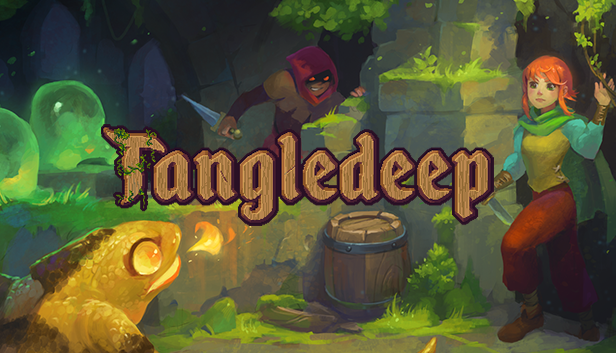
Cliqist: You’ve said that making games has been a lifelong dream. Was Tangledeep (or some similar version) always the game you wanted to make or did that come later?
Andrew Aversa: It is the game I’ve always wanted to make, but it didn’t quite start that way. For the first 6 months of development I was still putting most of my time into learning Unity and C#, and developing basic systems. I didn’t have any pre-written game design docs in mind. I started from a blank slate, and some of my earliest ideas got thrown right out the window as they turned out to be not very fun. But the more I worked on it, the more and more it resembled my dream game.
At what point during that process did you realize you had something special?
If you check out my original dev log on TIGSource you’ll see we spent quite awhile with only placeholder graphics.
But once we got the first pass of original art – one job, a handful of monsters and battle FX, and environmental tiles for one ‘biome’ – all of a sudden, it looked and felt so much better. That was the turning point, and I think those early screenshots got people excited. I certainly was!

You have an extensive music background between Impact Soundworks, composing on other video game titles, and the numerous Zircon albums and projects (one of which, Identity Sequence, had its own successful Kickstarter campaign). In what ways has your previous experience aided or hindered your adventures in game development?
It’s all been very helpful. While I did bite off quite a bit by composing and creating sounds for Tangledeep, it was all the more rewarding because I was able to create the *exact* kind of audio I wanted. I’m really happy with how all the music and sound came out. Aside from that, my experience working on music software for Impact Soundworks was helpful in managing a project of this scale.
A Successful Kickstarter Campaign
Tangledeep’s Kickstarter campaign met its initial goal in less than a week. People were enthralled out of the gate. You came in to this project with quite a bit of experience in successful Kickstarter campaigns (you even have an ebook on the topic), but did the immediate support surprise you? How prepared were you for the kind of reaction your campaign generated, both in those first days and as the support reached beyond your stretch goals?
Actually, it was the opposite! The immediate support didn’t surprise me, because I was prepared with a mailing list of people who expressed interest in Tangledeep. I knew I could count on their support for the early days. It’s the ongoing support that pushed above and beyond the initial wave that DID surprise and delight me. Especially being an unknown first-time developer, it was really gratifying to see that.
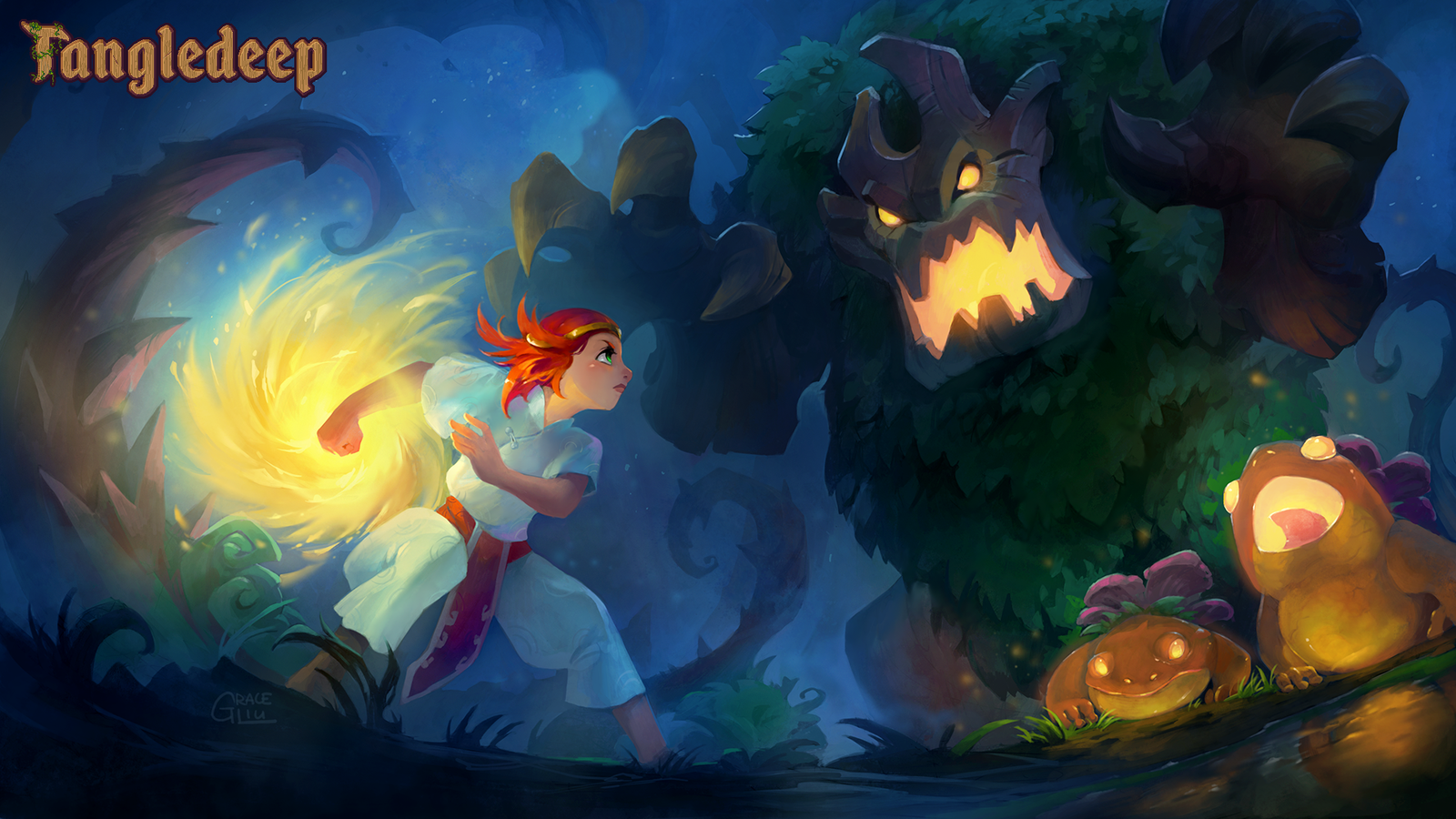
Reading through the campaign updates on the Kickstarter page, it’s apparent that you implemented new features and changes at an impressive clip. Game design is notoriously difficult. I’m curious, what were some of the biggest challenges you encountered throughout the development process? Any close calls or ideas that got scrapped due to technical issues?
The two biggest obstacles during development were the terrain drawing system and the save/load system. Since Tangledeep uses a lot of procedurally-generated maps, it was really hard to come up with a way to make all the layers of terrain look good. Things like walls, water, mud, lava, ground, grass, and trees use an intricate system of connection and literally thousands of sprites to account for all the different connection possibilities. Saving and loading the game state is also surprisingly hard since Tangledeep has such an immense amount of effects and interactions.
Thankfully, we didn’t have to cut any major features for launch, but one thing I really wanted to do was offer ‘game modifiers’. These would have been toggleable options that affected the base gameplay, at the cost of disabling your ability to get achievements. For example, one toggle would enable passive Health regeneration for your character, making the game easier. Another would make it so you couldn’t learn skills from your job, but instead find them as random drops. Wacky stuff like that. It might still happen, but not in the near future.
Random skill drops are a very clever idea. I can imagine that would create a whole new layer of replayability and diverse experiences. What prevented that and other toggleable options from being implemented?
The trickiest part was actually the UI, something that has been the bane of my existence since early on in the project. Suffice it to say I did not originally code the UI well at all. Jim has been updating and rewriting blocks of code, but it’s still difficult to work with. Adding a new UI for selecting game modifiers could have taken weeks. As we continue to refine things in the engine, I do expect that to get easier.

Health Concerns Arise During Development
In a September 2017 interview with SkyeMatrix, you mentioned that you released nine patches in the first 10 days following Tangledeep’s Early Access release. That’s crazy. On top of that, you were fielding questions and collecting data from multiple online communities. What did your typical day look like when the Early Access version launched? How has that changed now that the game has released?
I’ve been saying this to people in the Tangledeep community since I first started releasing builds, but my #1 priority is making a great game. It’s a commercial product, sure, but the money is secondary to my joy and passion for creating a high-quality experience that delivers joy to lots of people. Early on I was working around 8-9 hours a day, 7 days a week, sometimes more. To be honest, that continued through just about all of development. Toward the end it actually began affecting my health and only now am I learning that I can’t push myself 110% every day. I’m trying to settle into a less intense routine where I address bugs, community comments, and new content, while taking plenty of time for my own health as well.
Last weekend I was in the hospital for the second time in a month…I was stressing over a particular review of the game.
Was it frustrating to realize you couldn’t push yourself that hard or were you ready to scale back your hours by the time you noticed it was affecting your health?
It was perhaps more scary than frustrating. Last weekend I was in the hospital for the second time in a month, because my heart was beating out of rhythm (atrial fibrillation). I distinctly remember it started as I was stressing over a particular review of the game. Both Jim and my wife Jillian have been very good about encouraging me to start pacing myself going forward so that doesn’t happen again.
Combat in Tangledeep
The moment I started mixing and matching abilities from different jobs was the moment I realized how deep and diverse Tangledeep’s combat can be. My favorite combo is definitely the mobility of the Sword Dancer and the range of the Hunter. When the two are put together, I feel like a god. Not to mention, this particular combo really pushes the player to understand their different weapons, as you’re constantly jumping back and forth between melee and ranged distances. As you can tell, I’m quite enthusiastic about that. What job or combination of job abilities do you personally feel is the most fun to play? Any plans for additional jobs in the near future?
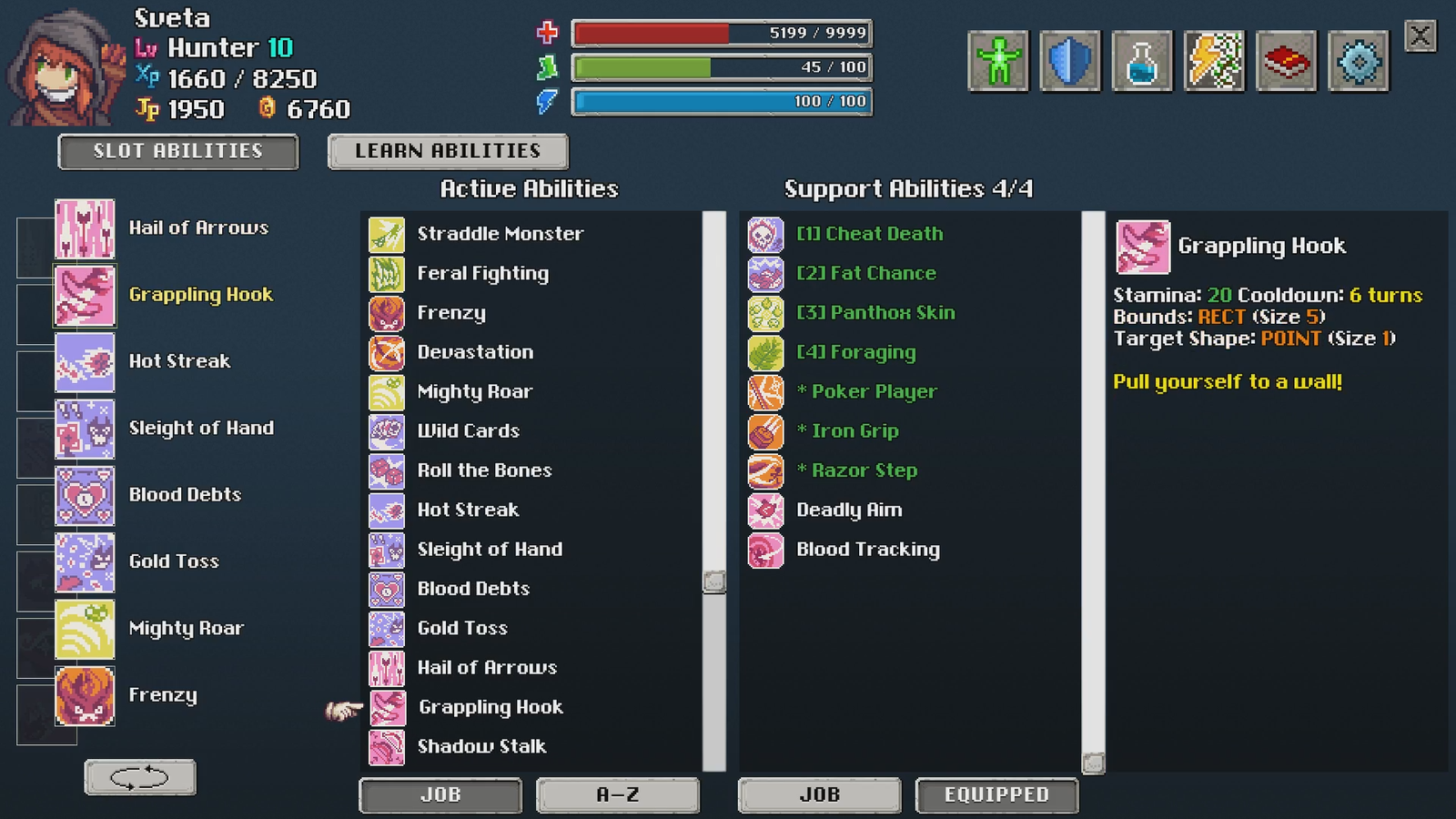
If there’s one thing I’m truly proud of it’s the job system of Tangledeep, so I’m glad you’re enjoying it as well! I definitely enjoy the Sword Dancer, along with the Wild Child. I love abilities and combos that effectively do more than one thing each turn. All of the Wild Child’s skills, which are learned from monsters, give you a self-buff as well as a primary effect of some kind. Sword Dancer can use things like Flame Serpent or Ice Tortoise to deal damage while also moving around the battlefield or taking other actions.
My favorite ability in the whole game might just be the Sword Dancer’s Thundering Lion. It’s a toggle where each step you take, you build up an electric charge, with a cap of 3. When you attack, you use up all your charges to call one lightning bolt per charge. At the same time, if you *don’t* attack, the charges give you a parry bonus. Parry chance in turn works really well for Sword Dancers because of all their on-parry effects. It ends up being a great multi-use ability that can be offensive or defensive depending on the situation.
Plus, it’s satisfying as hell to slash an enemy and blast them with three lightning bolts.
Yes! Thundering Lion is an essential component of my Hunter-Sword Dancer Survival Strategy™!
This guy knows what I’m talking about!
The Future
Sounds like we can look forward to a Q2 release of Tangledeep on the Nintendo Switch. Any news on a PS4 or Xbox One release?
We’re approved for development on Xbox One, with no word on PS4 yet. I think my preference would actually be for a mobile version of the game (iOS / Android) before PS4 or Xbox, since I think Tangledeep could work very well in that format.
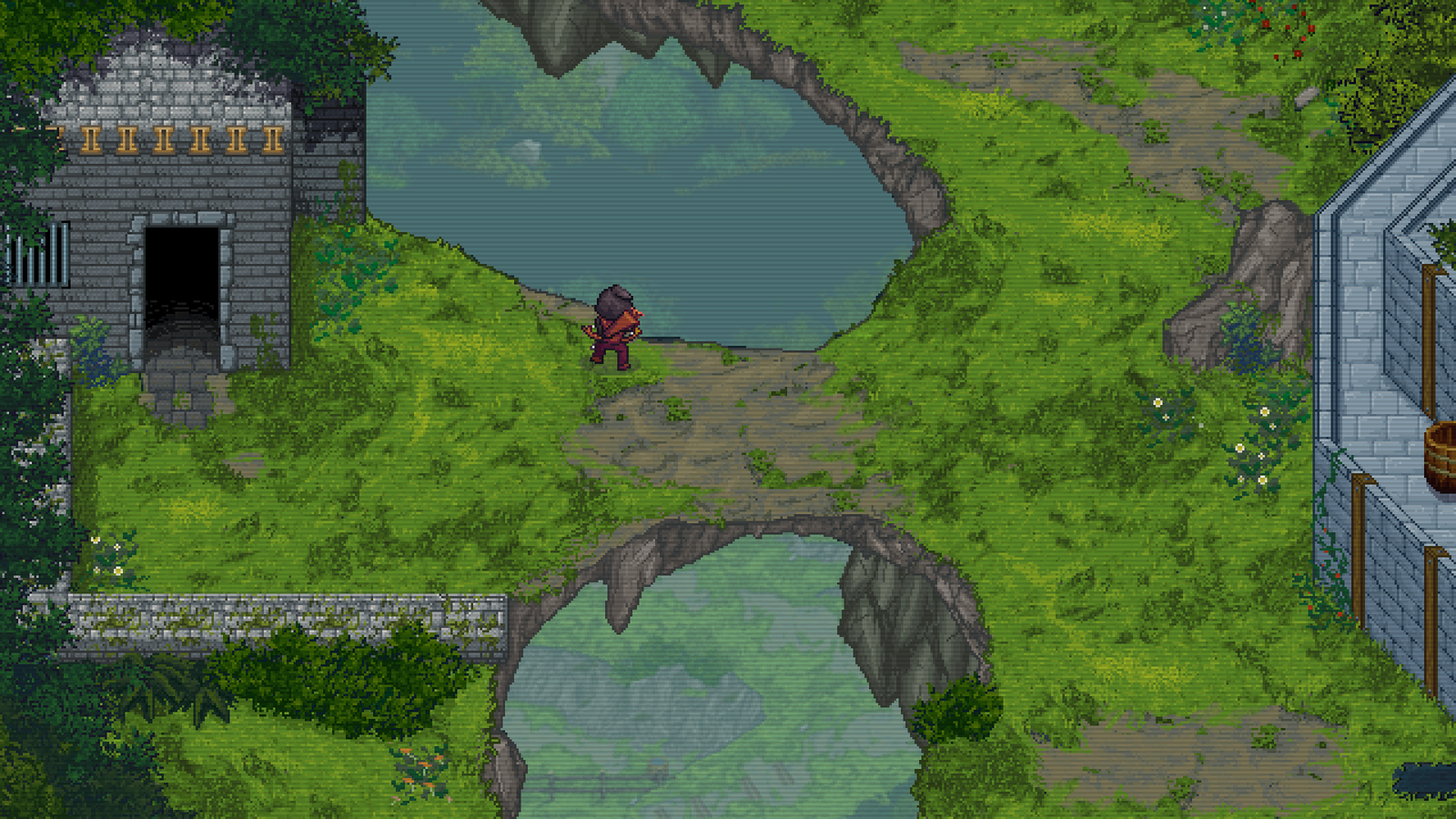
What goes into making that happen? I think a lot of gamers—myself included—hear developers talk about porting games to different platforms but don’t really understand what that means to a developer. How does that change the way you interact with the game, as far as patching or adding content down the road?
The difficulty of a port depends on things like how demanding the game is (graphics, CPU, memory) and how the game was coded. I chose Unity for a game engine early on because I knew it had broad compatibility. I can make a Mac or Linux build in seconds and the code is 99.999% identical to the Windows version. The Switch dev kit already has support for Unity out of the box, and while it’s not quite as easy as clicking a different button, it certainly makes the process much easier.
Since we haven’t yet pushed the game through the Nintendo pipeline I don’t yet know what the patch process will be like, but my understanding is that it will be substantially more difficult than the PC process. On Steam, all I have to do is upload a build and hit “Publish” and I’m good to go; GOG is about the same. What I’ve seen with the Switch is that there’s more of an approval and certification process, as they don’t want buggy or broken patches to be released on the platform.
That means we’ll probably want to think about bundling content and fixes into large updates for Switch, while they might come out more piecemeal for PC.
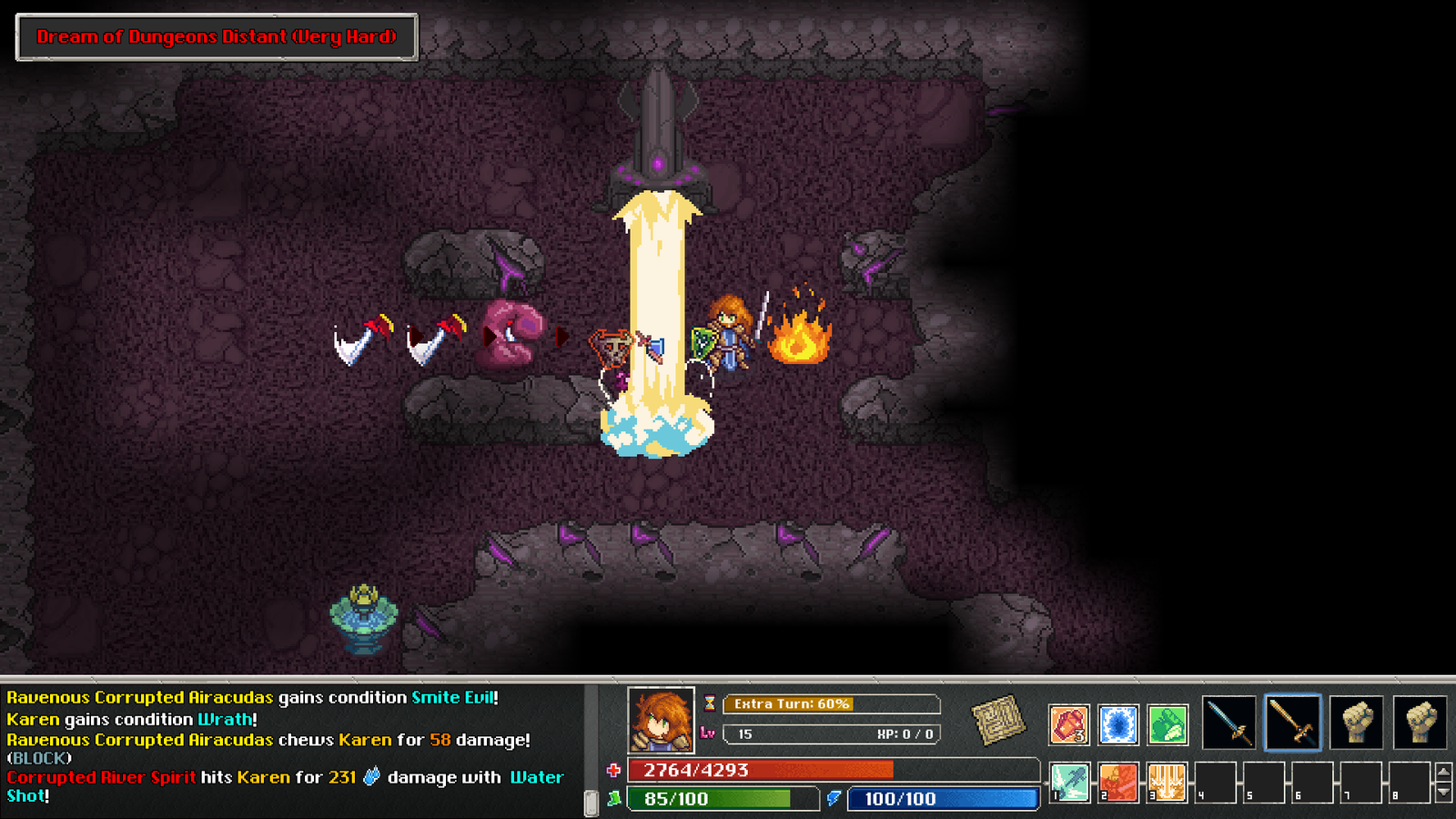
Thanks for taking the time to sit down and chat. Just for fun: You’ve got unlimited funds, unlimited resources, and, say, 2 years to make whatever game you want. What game are you making and why? Give me your elevator pitch.
Oh boy, that’s a fun one. I’ve given a little bit of thought to future games but haven’t set my mind on anything. I think I might lean toward some kind of grand tactical RPG in the Tangledeep world, a la Final Fantasy Tactics?
Thank you to Andrew Aversa for taking the time to speak with us.
Tangledeep is a roguelike dungeon-crawler full to the brim with personality–a polished throwback to classic 16-bit aesthetics from games like Chrono Trigger, with mechanics that will resonate with fans of games like Rogue Legacy and the Binding of Isaac. You can read our review here or head on over to the game’s Steam page.



